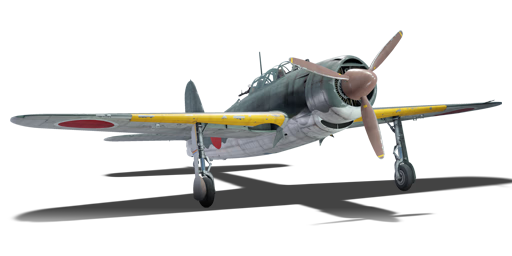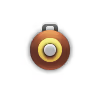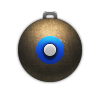




The D4Y3 mod. 33 Ko, designated as the Suisei 33A (彗星三三型甲), was a stop-gap measure for the piling up Suisei 12s without engines due to the production shortage of the materially expensive licensed DB601 engine. Instead of going for the high-output Atsuta 32 inline engine, the Suisei 33 was equipped with the Kinsei 62 radial engine which had relatively high output and abundant supply. Simply switching out the engine for a radial of roughly the same output still resulted in a decline of performance due to the aerodynamic characteristics, so the previous Model 12 was kept in parallel production and delivered to high-priority units instead.
It was introduced in Update 1.71 "New E.R.A.". While the main difference of the D4Y3 compared to the D4Y1 and D4Y2 is the engine, this doesn't result in better performance, on the contrary, due to the remodeled nose and aerial cooled engine, aerodynamics are worse and result in higher drag which put it just behind the D4Y2 in performance, while still performing better than the D4Y1. The main benefit of this Suisei however comes with the "Ko" subvariant, which was present on all standard production D4Ys, which swapped out their rear armament from the factory standard 7.7 mm Type 92 MG to the 13 mm Type 2 HMG which will shred any foe on its tail.
flaps
flaps
flaps
brake
| Belt | Belt filling | Armor penetration (mm) at a distance: | |||||
|---|---|---|---|---|---|---|---|
| 10 m | 100 m | 500 m | 1000 m | 1500 m | 2000 m | ||
| T/AP/IAI/AP/I | 13 | 12 | 7 | 3 | 2 | 0 | |
| T/AP/IAI/AP | 13 | 12 | 7 | 3 | 2 | 0 | |
| T/T/T/AP | 13 | 12 | 7 | 3 | 2 | 0 | |
| I/AP/AP/AP/IAI | 13 | 12 | 7 | 3 | 2 | 0 | |
| Belt | Belt filling | Armor penetration (mm) at a distance: | |||||
|---|---|---|---|---|---|---|---|
| 10 m | 100 m | 500 m | 1000 m | 1500 m | 2000 m | ||
| I/AP/HE-I | 28 | 26 | 19 | 13 | 8 | 6 | |
| AP/AP/AP/I | 28 | 26 | 19 | 13 | 8 | 6 | |
| AP/HE-I/HE-I/HE-I | 28 | 26 | 19 | 13 | 8 | 6 | |
| Name | Weight | Slot | ||||||
|---|---|---|---|---|---|---|---|---|
| 60 kg |  |  | ||||||
| 253 kg |  |  |  | |||||
| 499 kg |  | |||||||












Flight performance | |
|---|---|
Survivability |
|---|
Weaponry | |
|---|---|